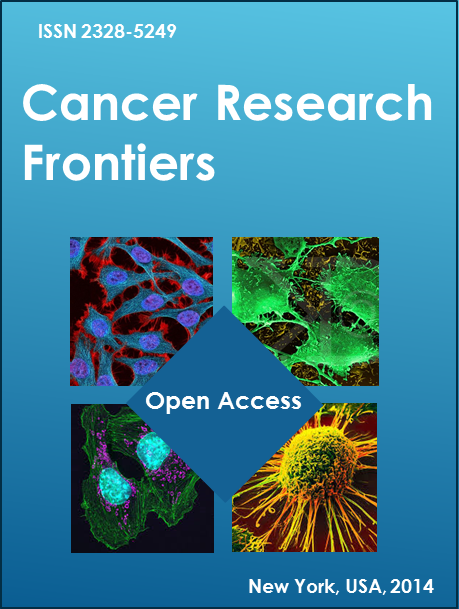Abstract _ Full Text (HTML) _ Full Text (PDF)
Research Article
Cancer Research Frontiers. 2017; 3(1): 192-203. doi: 10.17980/2017.192
RNA-Binding Motif 3 Protein Expression and Nuclear Architecture Changes as a Combined Biomarker to Predict Aggressive and Recurrent Prostate Cancer
Neil M. Carleton1*, Guangjing Zhu2, M. Craig Miller3, Christine Davis2, Robert W. Veltri2
1. Department of Biomedical Engineering, Carnegie Mellon University, Pittsburgh, PA 15213
2. The James Buchanan Brady Urological Institute, Department of Urology, The Johns Hopkins University School of Medicine, Baltimore, MD 21287
3. Statistical Consultant, Quakertown, PA
*Corresponding author: Neil M. Carleton. Carnegie Mellon University, Department of Biomedical Engineering, 5000 Forbes Ave, Pittsburgh, PA 15213. Tel: 412-266-1991; Email: ;
Robert W. Veltri, PhD. James Buchanan Brady Urological Institute, The Johns Hopkins University School of Medicine, 600 N. Wolfe Street, Baltimore, MD 21287. Tel: 410-952-5411; Email:
Citation: Neil M. Carleton, et al. RNA-Binding Motif 3 Protein Expression and Nuclear Architecture Changes as a Combined Biomarker to Predict Aggressive and Recurrent Prostate Cancer. Cancer Research Frontiers. 2017; 3(1): 192-203. doi: 10.17980/2017.192
Copyright: @ 2017 Neil M. Carleton, et al. This is an open-access article distributed under the terms of the Creative Commons Attribution License, which permits unrestricted use, distribution, and reproduction in any medium, provided the original author and source are credited.
Competing Interests: The authors declare no competing financial interests.
Received May 17, 2018; Revised June 25, 2018; Accepted July 9, 2018. Published July 30, 2018
ABSTRACT
Purpose: The RNA-binding motif protein 3 (RBM3) has been shown to be up-regulated in several types of cancer, including prostate cancer (PCa). Increased RBM3 nuclear expression has been linked to improved clinical outcomes. Given this, we examined RBM3 expression and its relation to nuclear morphometric changes in PCa cells.
Methods: This study utilized two tissue microarrays (TMAs) stained for RBM3 that included 80 total cases of PCa stratified by Gleason score. A software-mediated image processing algorithm identified RBM3-positive cancerous nuclei in the TMA samples and calculated twenty-two features quantifying RBM3 expression and nuclear architecture. Multivariate logistic regression (MLR) modeling was performed to determine if RBM3 expression and nuclear structural changes could predict PCa aggressiveness and biochemical recurrence (BCR). A leave-one-out cross validation (LOOCV) was used to estimate predictive performance of the models.
Results: RBM3 expression was found to be significantly downregulated in highly aggressive GS ≥ 8 PCa samples compared to other Gleason scores (P < 0.0001) and significantly down-regulated in recurrent PCa samples compared to non-recurrent samples (P = 0.0377). An eleven-feature nuclear morphometric MLR model accurately identified aggressive PCa, yielding a ROC-AUC of 0.90 (P < 0.0001) in the raw data set and 0.77 (95% CI: 0.83-0.97) for LOOCV testing. The same eleven-feature model was then used to predict recurrence, yielding a ROC-AUC of 0.92 (P = 0.0004) in the raw data set and 0.76 (95% CI: 0.64-0.87) for LOOCV testing.
Significant Conclusions: The RBM3 biomarker alone is a strong prognostic marker for the prediction of aggressive PCa and biochemical recurrence.
Key words: prostate cancer, RBM3, nuclear morphometry, biochemical recurrence, aggressiveness








